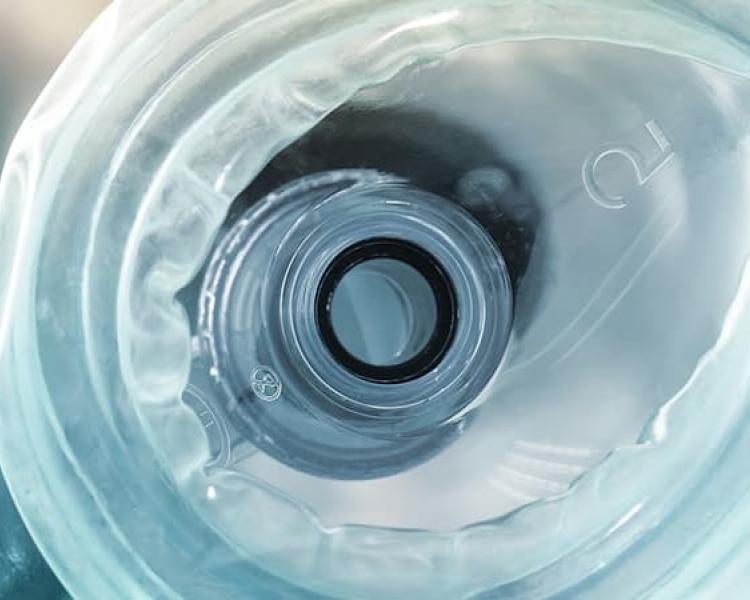advanced membrane technology thoughtfully designed for ease-of-use and sustainability
Membrane technology
memsorb™ uses patented advanced medical membrane technology to filter CO2 from anesthetic circuits rather than absorption via a chemical reaction. This next generation technology relies on a polymeric membrane (similar to those used in cardiac oxygenators) that selectively allows CO2 to leave the rebreathing system, while maintaining the anesthetic vapor in the circuit.
The principle of membrane separation can be observed in the figure (right).
CO2 travels through the membrane material and is removed from the lumen of the hollow fiber membrane by means of a flush gas. The anesthetic vapor cannot travel through the membrane material and is maintained within the circuit.

Safe CO2 removal
CO2 is removed from the exhaled patient gas through a passive diffusion process across the selectively permeable membrane. As the exhaled gas passes over the fibers, the CO2 diffuses from the area of higher concentration on the patient side into the area of lower concentration. A flush gas (a combination of air-oxygen) is fed into the lumen of the fibers to flush out the CO2 that has diffused across the membrane.
This process maintains a concentration gradient across the membrane enabling the continuous removal of the CO2. By the time the exhaled gas passes through memsorb™ and reaches the perimeter of the outer shell, the concentration of remaining CO2 is reduced to clinically safe levels. The luminal (intra-capillary) flow (i.e. flush gas), now containing CO2 exits through the exhaust base of the device and is scavenged.
“Several studies show that the use of low […] flow anesthesia techniques can dramatically reduce the annual costs of volatile anesthetics.”
(Bengtson JP 1988, Cotter SM 1991, Feiss P 1990)
Comparison to chemical absorption
| Chemical absorber | memsorb™ | |
|---|---|---|
| Method of CO2 removal | Chemical reaction that binds CO2 to granulate | Passive diffusion over membrane CO2 is flushed out of the unit via a flush gas |
| Useful life | Approximately 1 day depending on fresh gas flow | 24 months |
| Exhaustion indicator | Color change, inspired CO2 measure | N/A. Refer to expiry date indicated on label |
| Chemical reaction | Yes | No. The medical membranes used in memsorb™ are inert |
| Potential for compound production | Yes | No |
| Condensation | Yes. Chemical reaction produces heat + water leading to machine-side condensation | No. Eliminates all machine side condensation |

